《NUMERICAL ANALYSIS》
| 作者 | 编者 |
|---|---|
| 出版 | 未查询到或未知 |
| 参考页数 | 287 |
| 出版时间 | 没有确切时间的资料 目录预览 |
| ISBN号 | 无 — 求助条款 |
| PDF编号 | 819486328(仅供预览,未存储实际文件) |
| 求助格式 | 扫描PDF(若分多册发行,每次仅能受理1册) |
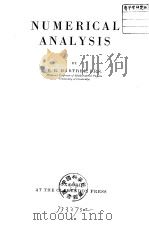
CHAPTER Ⅰ.INTRODUCTION1
1.1.What numerical analysis is about1
1.2.The main types of problems in numerical analysis4
1.3.Errors,mistakes,and checking5
1.4.Arrangement of work8
1.5.Accuracy and precision9
CHAPTER Ⅱ.THE TOOLS OF NUMERICAL WORK AND HOW TO USE THEM11
2.1.The main tools of numerical work11
2.2.Desk machines11
2.2.1.Addition and subtraction14
2.2.2.Transfer from accumulator to setting keys or levers15
2.2.3.Multiplication16
2.2.4.Division17
2.2.5.Other calculations19
2.2.6.Adding machines19
2.3.Mathematical tables20
2.3.1.Critical tables21
2.3.2.Auxiliary variables in tables22
2.4.Slide rule23
2.5.Graph paper24
2.6.Other machines24
2.7.The organization of a calculation25
CHAPTER Ⅲ.EVALUATION OF FORMULAE27
3.1.The significance of formulae in numerical work27
3.2.Evaluation of polynomials29
3.3.Evaluation of power series30
3.4.Kinds of formulae to avoid31
3.5.Evaluation of a function in the neighbourhood of a value of the argument at which it becomes indeterminate33
CHAPTER Ⅳ.FINITE DIFFERENCES34
4.1.Functions of a continuous variable in numerical analysis34
4.2.Finite differences36
4.2.1.Notation for finite differences37
4.3.Finite differences in terms of function values39
4.4.Simple applications of differences40
4.4.1.Differences of a polynomial40
4.4.2.Building up polynomials42
4.4.3.Checking by differences44
4.4.4.Effect of rounding errors on differences47
4.4.5.Direct evaluation of second differences48
4.4.6.Building up from second differences49
4.5.Differences and derivatives50
4.6.Finite difference operators51
4.7.Examples of the use of finite difference operators55
4.7.1.Derivatives in terms of differences55
4.7.2.Negative powers of(U/δ)56
4.7.3.δ2f in terms of f"and its differences57
4.7.4.δf? symmetrically in terms of f’and its differences at x0 and x158
4.7.5.μδf0 in terms of f’and its differences at x=x058
CHAPTER Ⅴ.INTERPOLATION60
5.1.Linear and non-linear interpolation60
5.1.1.Linear interpolation61
5.2.Non-linear interpolation62
5.2.1.Half-way interpolation62
5.2.2.Newton’s forward-difference formula64
5.3.Some expansions65
5.4.Everett’s interpolation formula67
5.4.1.Bessel’s interpolation formula68
5.4.2.Use of Bessel’s and Everett’s formulae70
5.4.3.Practical details for non-linear interpolation72
5.5.Lagrange’s formula74
5.5.1.Special interpolation methods for particular functions76
5.6.Subtabulation77
5.6.1.End-figure method for subtabulation79
5.7.Interpolation of a function given at unequal intervals of the argument83
5.7.1.Evaluation of Lagrange’s interpolation formula by a sequence of linear cross-means84
5.7.2.Divided differences87
5.8.Inverse interpolation90
5.8.1.How not to do inverse interpolation92
5.9.Truncation errors in interpolation formulae94
CHAPTER Ⅵ.INTEGRATION(QUADRATURE)AND DIFFERENTIATION95
6.1.Definite and indefinite integrals,and the integration of differential equations95
6.2.Integration formula in terms of integrand and its differences96
6.2.1.An alternative derivation97
6.2.2.Integration formula in terms of the integrand and the differences of its derivative98
6.2.3.Integration formula in terms of the integrand and its derivatives99
6.3.Integration over more than one interval99
6.4.Evaluation of an integral as a function of its upper limit102
6.4.1.Change of interval length in an integration104
6.4.2.Integration in the neighbourhood of a singularity of the integrand106
6.4.3.Integration when the integrand increases’exponentially’108
6.4.4.Two-fold integration108
6.5.Integrals between fixed limits109
6.5.1.Gregory’s formula110
6.5.2.Integral in terms of function values111
6.5.3.Use of Simpson’s or Weddle’s rules111
6.5.4.The integral ? e-x2 dx111
6.5.5.Evaluation of a definite integral when the integrand has a singularity113
6.5.6.Definite integrals which are functions of a parameter113
6.5.7.Use of unequal intervals of the independent variables115
6.6.Numerical differentiation116
6.6.1.Differentiation formulae118
6.6.2.Graphical differentiation120
6.7.Errors of interpolation and integration formulae121
6.7.1.Use of formulae for the error124
CHAPTER Ⅶ.INTEGRATION OF ORDINARY DIFFERENTIAL EQUATIONS125
7.1.Step-by-step methods125
7.1.1.One-point and two-point boundary conditions125
7.2.Second-order equation with first derivative absent126
7.2.1.Change of the interval of integration130
7.2.2.Variants of the method132
7.3.First-order differential equations133
7.3.1.Another method for a first-order equation135
7.3.2.Second-order equation with the first derivative present136
7.3.3.Equations of order higher than the second137
7.4.Taylor series method137
7.5.Other procedures139
7.5.1.Richardson’s’deferred approach to the limit’139
7.5.2.Iterative processes141
7.6.Two-point boundary conditions143
7.6.1.Iterative quadrature144
7.6.2.Characteristic value problems146
7.7.Further notes on numerical integration of ordinary differential equations147
7.7.1.The Madelung transformation148
7.7.2.The Riccati transformation148
CHAPTER Ⅷ.SIMULTANEOUS LINEAR ALGEBRAIC EQUATIONS AND MATRICES150
8.1.Direct and indirect methods for simultaneous linear equations150
8.1.1.Matrices152
8.1.2.Ill-conditioned equations152
8.1.3.Normal equations155
8.2.Elimination155
8.2.1.General elimination process157
8.2.2.Evaluation of a solution by elimination159
8.2.3.Alternative arrangement of the elimination process162
8.3.Inverse of a matrix by elimination162
8.4.Choleski’s method164
8.4.1.Inverse of a matrix by Choleski’s method167
8.5.Relaxation method167
8.5.1.Group relaxations170
8.5.2.Use and limitations of the relaxation method171
8.5.3.Linear differential equations and linear simultaneous equations173
8.6.Characteristic values and vectors of a matrix178
8.6.1.Iterativc method for evaluation of characteristic values and characteristic vectors of a symmetrical matrix180
8.6.2.An alternative process182
8.6.3.Richardson’s purification process for characteristic vectors182
8.7.Relaxation process for characteristic vectors188
CHAPTER Ⅸ.NON-LINEAR ALGEBRAIC EQUATIONS190
9.1.Solution of algebraic equations190
9.2.Graphical methods190
9.3.Iterative processes191
9.3.1.Examples of iterative processes193
9.3.2.Derivation of a second-order process from a first-order process196
9.4.Multiple roots and neighbouring roots197
9.5.Special processes for special types of equations198
9.5.1.Quadratic equations199
9.5.2.Cubic and quartic equations200
9.5.3.Polynomial equations200
9.5.4.Repeated roots201
9.5.5.Division of a polynomial by a quadratic201
9.5.6.Real quadratic factors of a polynomial203
9.5.7.Second-order process for improving the approximation to a quadratic factor205
9.6.Simultaneous non-linear equations207
9.7.Three or more variables212
CHAPTER Ⅹ.FUNCTIONS OF TWO OR MORE VARIABLES214
10.1.Functions of a complex variable and functions of two variables214
10.1.1.Numerical calculations with complex numbers214
10.2.Finite differences in two dimensions;square grid215
10.3.The operator ?2/?x2+?2/?y2217
10.3.1.Special relations when ?2f/?x2+?2f/?y2=0218
10.4.Finite differences in cylindrical coordinates219
10.5.Partial differential equations221
10.6.Elliptic equations223
10.6.1.Relaxation process224
10.6.2.Reducing the mesh size228
10.6.3.Further notes on the relaxation process230
10.6.4.Richardson-Liebmann process for Laplace’s equation232
10.7.Parabolic equations232
10.7.1.Replacement of the second-order(space)derivative by a finite difference233
10.7.2.Replacement of the first-order(time)derivative by a finite difference233
10.7.3.Replacement of both derivatives by finite differences235
10.7.4.Note on methods for parabolic equations236
10.8.Hyperbolic equations.Characteristics236
10.8.1.Finite differences between characteristics238
CHAPTER Ⅺ.MISCELLANEOUS PROCESSES239
11.1.Summation of series239
11.1.1.Euler’s transformation for a slowly convergent series of terms of alternate signs240
11.1.2.Use of the Euler-Maclaurin integration formula in the summation of series241
11.2.Harmonic analysis243
11.3.Recurrence relations for a sequence of functions246
11.4.Smoothing247
11.4.1.Automatic methods of smoothing249
11.4.2.Smoothing by use of an auxiliary function251
CHAPTER Ⅻ.ORGANIZATION OF CALCULATIONS FOR ANAUTOMATIC MACHINE255
12.1.Automatic digital calculating machines255
12.2.Preparation of calculations for an automatic digital calculating machine258
12.3.Flow diagrams259
12.4.Coding261
12.5.Examples of programming and coding263
12.6.Form of instructions on the input tape267
12.7.Sub-routines269
12.8.Hand and automatic calculation271
EXAMPLES274
BIBLIOGRAPHY280
INDEX284
《NUMERICAL ANALYSIS》由于是年代较久的资料都绝版了,几乎不可能购买到实物。如果大家为了学习确实需要,可向博主求助其电子版PDF文件。对合法合规的求助,我会当即受理并将下载地址发送给你。
高度相关资料
-
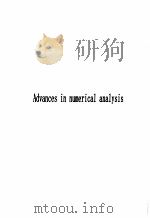
- ADVANCES IN NUMERICAL ANALYSIS
- 1992 OXFORD UNIVSERSITY PRESS
-

- NUMERICAL MATHEMATICAL ANALYSIS
- 1955 THE JOHNS HOPKINS PRESS
-
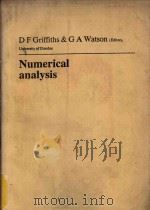
- Numerical analysis
- 1986 Longman Scientific & Technical; Copublished in the U.S.with Wiley
-
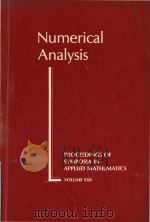
- Numerical analysis
- 1979 American Mathematical Society
-
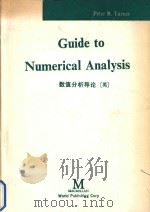
- Guide to numerical analysis
- 1989 Macmillan Education
-

- Numerical functional analysis
- 1976 Wiley
-
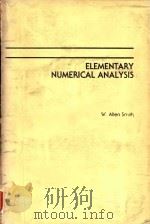
- Elementary numerical analysis
- 1986 Prentice-Hall
-

- Applied numerical analysis
- 1970 AddisonWesley
-
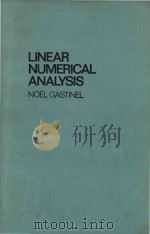
- Linear numerical analysis
- 1970 Hermann ;Academic Press
-
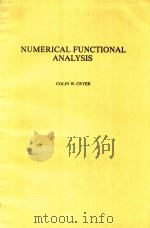
- NUMERICAL FUNCTIONAL ANALYSIS
- 1982 OXFORD UNIVERSITY PRESS
-
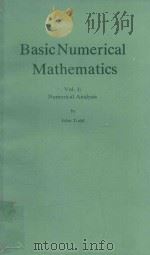
- BASIC NUMERICAL MATHEMATICS VOL.1 NUMERICAL ANALYSIS
- 1979 BIRKHAUSER VERLAG BASEL AND STUTTGART
-
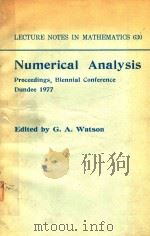
- NUMERICAL ANALYSIS
- 1978 SPRINGER
-
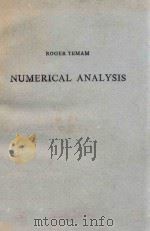
- NUMERICAL ANALYSIS
- 1973 D.REIDEL PUBLISHING COMPANY
-

- ELEMENTARY NUMERICAL ANALYSIS
- 1985 JOHN WILEY & SONS
提示:百度云已更名为百度网盘(百度盘),天翼云盘、微盘下载地址……暂未提供。➥ PDF文字可复制化或转WORD